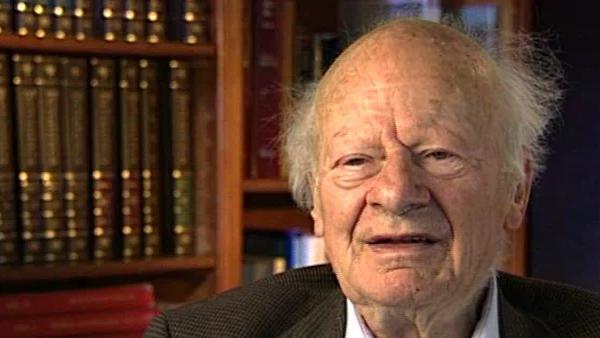NEXT STORY

Robert Wilson creates the Fermilab
RELATED STORIES

NEXT STORY

Robert Wilson creates the Fermilab
RELATED STORIES


|
Views | Duration | |
|---|---|---|---|
| 111. CF Powell and the pi meson | 458 | 04:06 | |
| 112. Members of the Cornell Laboratory of Nuclear Studies | 375 | 01:27 | |
| 113. Resonance for neutral pi mesons | 370 | 01:47 | |
| 114. Hoping high energy physics would be the key to nuclear forces | 453 | 02:11 | |
| 115. Work on low energy systems | 391 | 03:56 | |
| 116. The Bethe-Salpeter equation | 541 | 04:23 | |
| 117. Robert Wilson creates the Fermilab | 549 | 01:58 | |
| 118. People moving in and out of the Cornell physics lab | 828 | 02:36 | |
| 119. Kinoshita's work on the extra magnetic moment of the electron | 493 | 02:47 | |
| 120. Nobel prize winners here at Cornell | 603 | 02:16 |


Salpeter was one of Peierls' students, one of the continuing exchange of PhDs between Peierls and myself. He came here and he obviously was very knowledgeable and we worked together. We knew the Feynman theory of quantum electrodynamics, but we said to ourselves 'Well, really one ought to be able to do this also for particles that interact strongly.' And, so we set out to... to do quantum electrodynamics in a... in an external field, let's say the field of an atom, strong field of an atom. And we convinced ourselves that one could generalize the quantum electrodynamics to include strong interaction, and we constructed an equation for two interacting... strongly interacting particles with the effect of the electromagnetic field included, and that became known as the Bethe-Salpeter Equation. We continued a little bit on that in rewriting the Handbuch article which I had written about one and two electron problems. Salpeter helped to generalize this to... to include relativity and quantum electrodynamics, and that produced the second edition which came out as a separate book. And we had a graduate student translate the old paper into English and added to it in English what we had newly found. So this was the Bethe-Salpeter edition of Quantum Theory of One and Two Electron Problems.
[Q] And, there were other people like Rohrlich?
Yes. Well, he became professor in Syracuse. Salpeter, as I have mentioned already, went into astrophysics and discovered how to make carbon atoms out of helium, and remained in... in astrophysics most of his life. There was Dalitz coming again from... from Peierls, who then became the chief assistant of Peierls at Birmingham and later on in... in Oxford.
The late German-American physicist Hans Bethe once described himself as the H-bomb's midwife. He left Nazi Germany in 1933, after which he helped develop the first atomic bomb, won the Nobel Prize in Physics in 1967 for his contribution to the theory of nuclear reactions, advocated tighter controls over nuclear weapons and campaigned vigorously for the peaceful use of nuclear energy.
Title: The Bethe-Salpeter equation
Listeners: Sam Schweber
Silvan Sam Schweber is the Koret Professor of the History of Ideas and Professor of Physics at Brandeis University, and a Faculty Associate in the Department of the History of Science at Harvard University. He is the author of a history of the development of quantum electro mechanics, "QED and the men who made it", and has recently completed a biography of Hans Bethe and the history of nuclear weapons development, "In the Shadow of the Bomb: Oppenheimer, Bethe, and the Moral Responsibility of the Scientist" (Princeton University Press, 2000).
Tags: quantum electrodynamics, Handbuch der Physik, Edwin Salpeter, Rudolf Peierls, Richard Dalitz
Duration: 4 minutes, 24 seconds
Date story recorded: December 1996
Date story went live: 24 January 2008